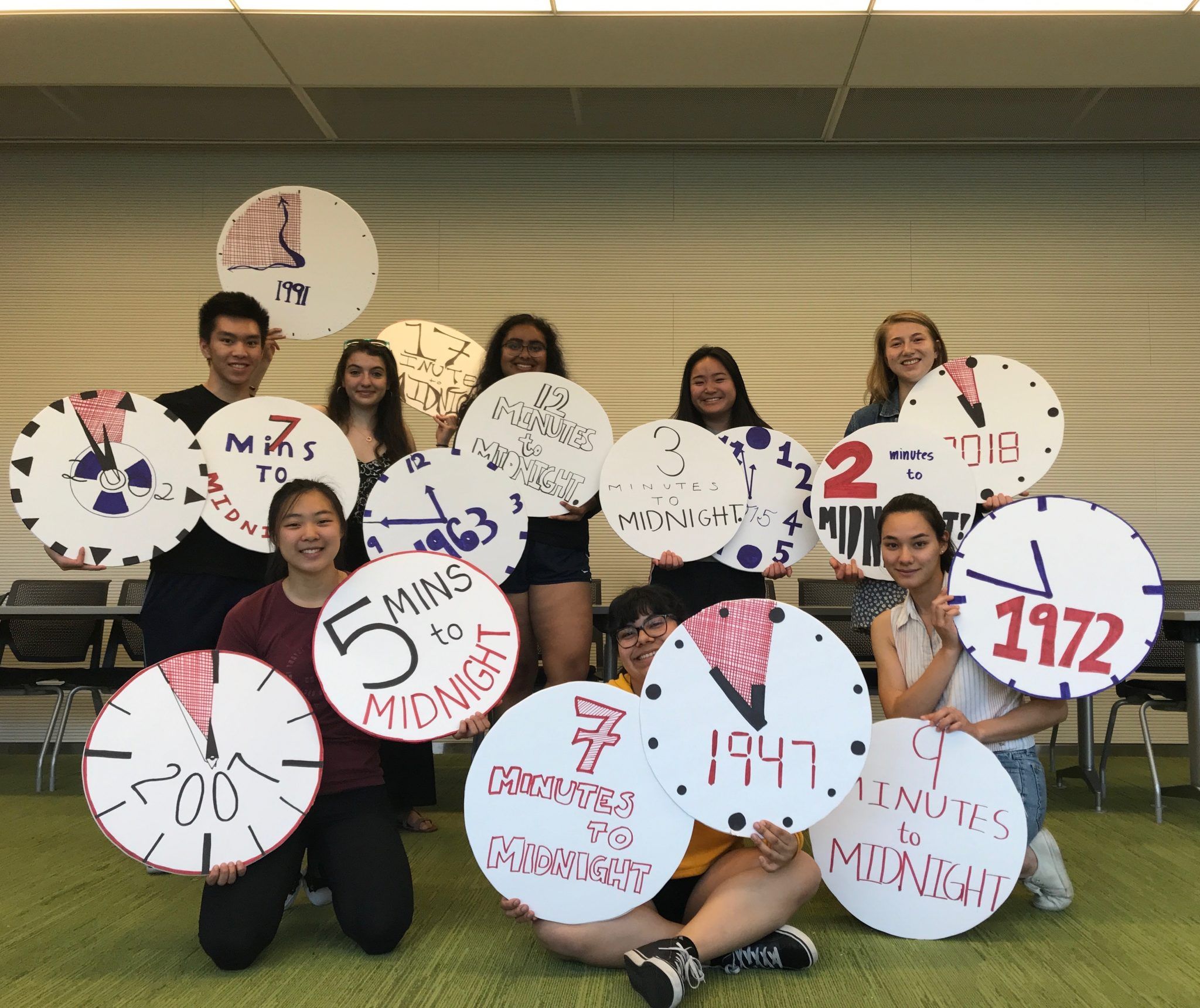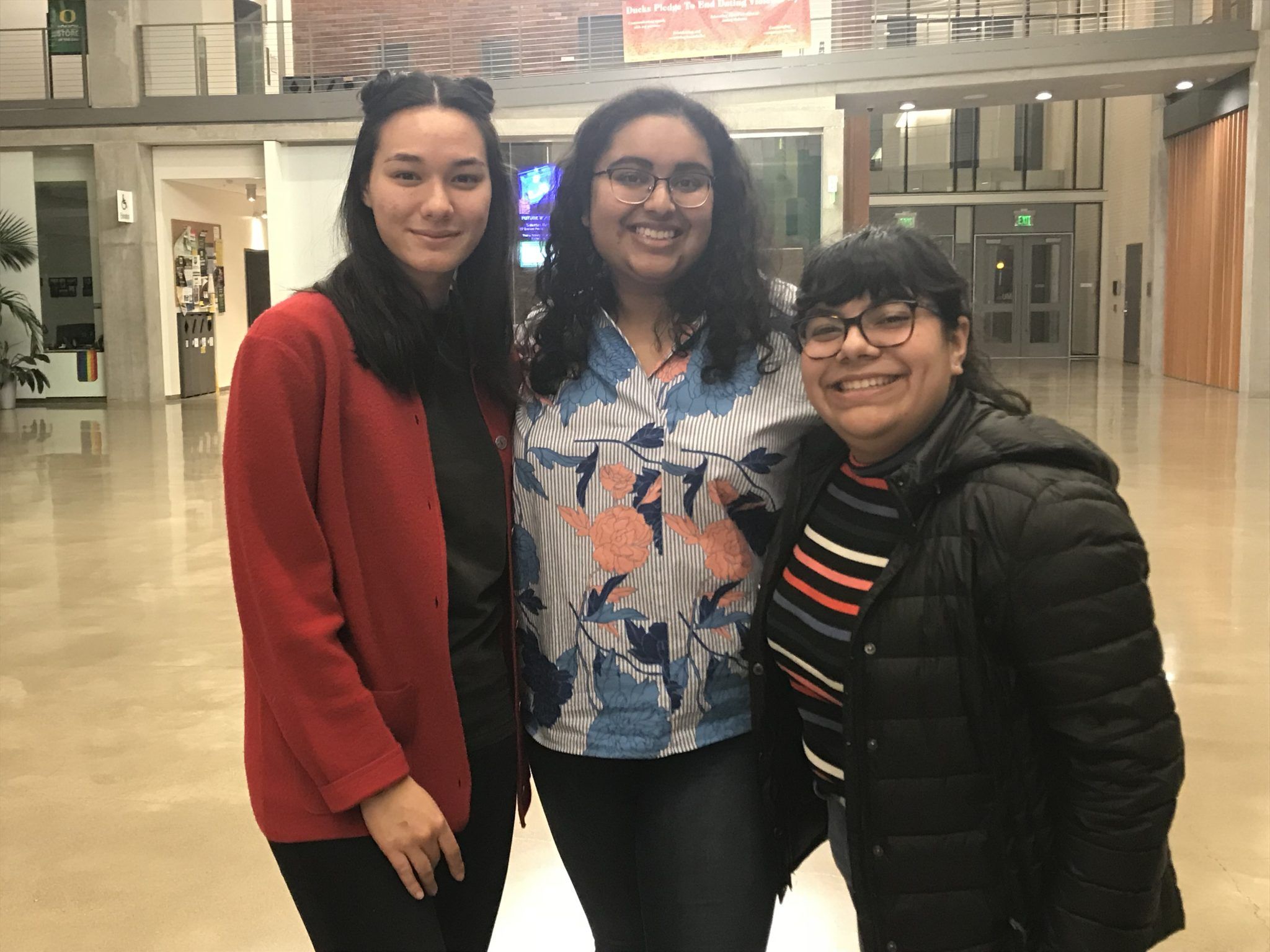Doomsday Clocks on display
By Dawn Stover | July 24, 2018
 Student exhibit of Doomsday Clocks at University of Oregon in May 2018. Credit: UO Beyond War
Student exhibit of Doomsday Clocks at University of Oregon in May 2018. Credit: UO Beyond War
Doomsday. The word is a dark one, but a group of students at the University of Oregon saw it as a conversation starter.
Liana Hu, president of a student group called UO Beyond War, says members have focused on nuclear conflict as their theme since 2017 “because of the current administration and the choices that are being made in terms of modernization of the nuclear arsenal.” After learning about the Bulletin’s Doomsday Clock (which is designed to remind humans how close we are to destroying our world with nuclear weapons and other dangerous technologies of our own making) and attending a presentation by political science associate professor Jane Cramer, the students decided to create a clock display to raise awareness of nuclear risk. Hu says they wanted to convey three points: that the president has the power to singlehandedly decide when to launch nuclear weapons, that these weapons are incredibly destructive, and that there are alternatives to the administration’s hefty spending on new nuclear weapons.
The students made a dozen Doomsday Clocks, a sampling of the clock’s settings from 1947 to 2018. For three days in late May, the clocks were stationed on the lawn in front of the university’s Chapman Hall, which sees heavy foot traffic from students and the general public. Next to the clocks, the students placed an array of 150 small red flags, each representing an estimated 1,000 people who would be killed or injured if a nuclear warhead with a yield of 150 kilotons were to be detonated above the campus in Eugene, Oregon.

Abha Joshi, who coordinates social media for the group, says the students selected some clocks from earlier decades that are close to the current setting of 2 minutes to midnight, “to show how precarious the situation is.” The students also chose a few clocks with settings much farther from midnight “to show that we can move toward a more peaceful world,” Joshi says.
Of the passersby who stopped to talk, an older man familiar with the Doomsday Clock said he was sad to see that students today are facing the same threat as his generation. Some of the younger people asked why they should concern themselves with nuclear weapons if we’re all doomed. The organizers took that as an opportunity to point out the years in which the clock hand moved backward, says Natalie Perez, the group’s director of recruitment, and to talk about “what could be done to push the time back.” The exhibit included suggestions for actions, such as writing to oppose funding for new nuclear weapons.
The students had not heard of the Doomsday Clock until this year, and they were intrigued by the name. “I think it brings a certain amount of urgency to the subject,” Joshi says. “Regardless of whether it’s scary or negative, we can always end on a positive note.”

Together, we make the world safer.
The Bulletin elevates expert voices above the noise. But as an independent nonprofit organization, our operations depend on the support of readers like you. Help us continue to deliver quality journalism that holds leaders accountable. Your support of our work at any level is important. In return, we promise our coverage will be understandable, influential, vigilant, solution-oriented, and fair-minded. Together we can make a difference.
Keywords: Beyond War, University of Oregon, nuclear weapon modernization
Topics: Doomsday Clock, Nuclear Risk, Nuclear Weapons














